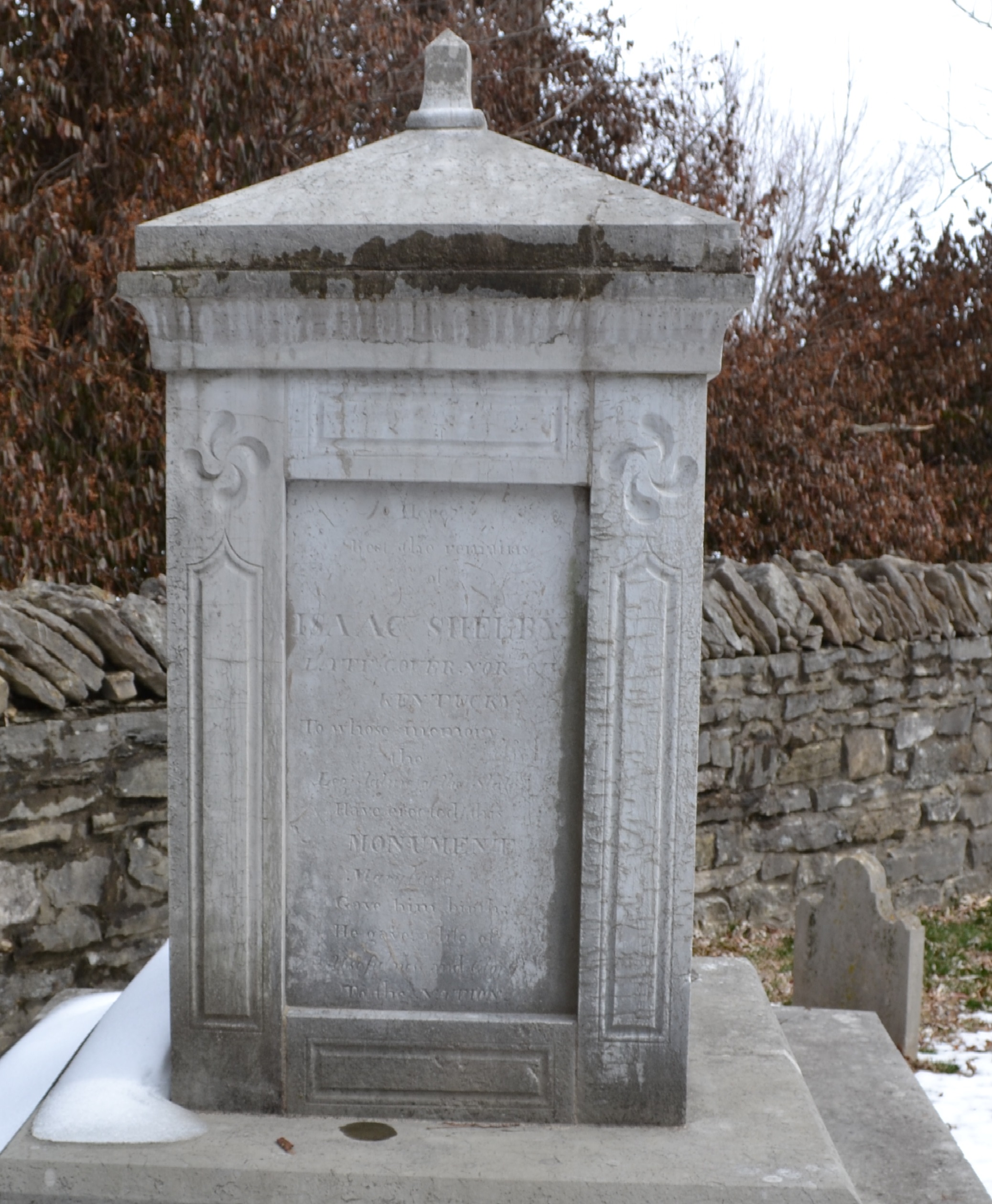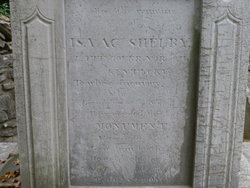Isaac SHELBY
SAR Patriot #:
P-288390
The following information was assembled from numerous sources and cannot be used directly as proof of Qualifying Service or Lineage.
It is considered a research aid and is intended to assist in locating sources that can be used as proof.
State of Service: VA/NC
Qualifying Service: Colonel / Civil Service / Patriotic Service
DAR #: A102449
Birth: 11 Dec 1750 Hagerstown / / MD
Death: 18 Jul 1826 Travelers Rest / Lincoln / KY
Qualifying Service Description:
- Colonel, also Captain, Virginia Militia
- Commissioner of Peace
- Virginia General Assembly
- Furnished provisions and canoes for the Chickamauga Campaign, 1779
Additional References:
- Draper, Lyman C., King’s Mountain, and Its Heroes: History of the Battle of King’s Mountain, October 7th, 1780, Ohio. Cincinnati: Peter G. Thomson, 1881, pg 411
- Gwathmey, John H., Historical Register of Virginians in the Revolution: Soldiers, Sailors, Marines, 1775-1783, Virginia. Richmond: Dietz Press, 1938, page 705
- Summers, Lewis Preston, Annals of Southwest Virginia 1746-1786, Washington County, 1777-1870, Virginia. Richmond: J.L. Hill Printing Company, 1903, pages 285, 294, 298, 308
- Auditor of Public Accounts, Book II, 1779, Virginia State Library, Archives Division, Revolutionary War Service Records, pg 190
Spouse: Susanna/Susannah Hart
Children: Sarah/Sara Hart; Isaac; Letitia Cox; Alfred; Thomas Hart; James; Evan;
Members Who Share This Ancestor
| Date Approved | Society | ACN | SAR Member Info | Lineage via Child | View Application Detail | |
|---|---|---|---|---|---|---|
| 1979-08-23 | KY | Unassigned | Berian Magoffin (115944) | Isaac | ||
| 1981-02-04 | MI | Unassigned | William Reade Shelby II (118092) | Evan | ||
| 1985-02-08 | VA | Unassigned | Sidney T Telford Jr (118225) | Sarah | ||
| 1985-04-08 | FL | 229918 | Charles Shelby Kapualani Wingate (125608) | Isaac | ||
| 1985-04-25 | VA | Unassigned | James Lawrence Meem Jr (119629) | Sarah | ||
| 1992-10-12 | FL | 212060 | Barry Scott Wingate (139614) | Isaac | ||
| 1992-10-12 | FL | 212061 | Jerry Wayne Wingate (139615) | Isaac | ||
| 1992-10-12 | FL | 212062 | Bobby Lee Wingate (139616) | Isaac | ||
| 1996-04-29 | PA | 208453 | Wallace Mcdowell Shelby (142706) | Sarah | ||
| 1996-07-10 | NJ | 203455 | Joseph Bryan Shelby (146734) | Sarah | ||
| 1999-02-05 | LA | 2863 | Sanders Ritsch Cazedessus (151381) | Isaac | ||
| 2008-02-20 | IL | 30940 | Stephen Chouteau Murphy (171106) | Sarah | ||
| 2011-08-04 | OK | 43500 | Todd Pope Ward (180320) | Letitia | ||
| 2013-05-17 | NM | 52624 | Paul Charles Voegeli (187311) | Letitia | ||
| 2017-02-17 | AL | 73214 | Gilbert Greenway White III (201456) | Sarah/Sally | ||
| 2022-03-11 | KY | 101044 | Joseph Grant Yocum DVN (221957) | Sarah | ||
| 2023-06-02 | CA | 107650 | Stephen Shelby Magoffin (226775) | Isaac | ||
| 2023-12-22 | KY | 110236 | Joseph Grant Yocum III (228755) | Sarah | ||
| 2023-12-22 | KY | 110237 | Andrew McGrath Yocum (228756) | Sarah | ||
| 2023-12-22 | KY | 110238 | Seth Hartman Yocum (228757) | Sarah |
Location:
Stanford / Lincoln / KY / USA
Find A Grave Cemetery #:
Marker Type:
SAR Grave Dedication Date:
23 Sep 2017
Comments:
Inscription: Here Rest the remains of ISAAC SHELBY LATE GOVERNOR OF KENTUCKY to whose memory the Legislature of the State Have erected this MONUMENT Maryland Gave him birth. He gave a Life of Usefulness and Glory to the Nation.
Directions to Cemetery / Gravesite:

